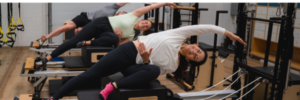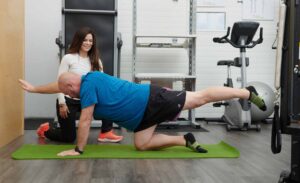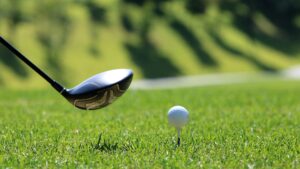Cycling has been called the new golf. The sport has risen dramatically in popularity over the past few years and continues to grow. Today participants of all ages are enjoying the physical benefits as well as the joy that comes from exploring new places while on a bike. Combining nature, social engagement and pushing physical abilities has contributed to the increase of this up and coming activity. Whether your goal is to recreationally ride, ride in a group, commute or compete, there are some important steps you can take to reduce your chance of developing injuries and/or improving your physical performance.
Some Areas To Consider:
Pre-Ride
Pre-ride warm up exercises are important and most often overlooked. The dynamic movements of a warm up to consider, for example, are squats, jumping jacks, plyometrics, arm circles, and active spinal flexion and extension. The purpose of a warm up is to get blood pumping and pre-load important areas such as the gluteal muscle groups, spine, shoulders, scapula, hip flexors, and knees. Lastly, movements should be dynamic and vary in speed and tempo.
During the Ride
Consider increasing time in the saddle gradually to allow your body to adapt to the forward flexed cycling posture. The more time you spend cycling your “cycling” musculature (abdominals, pectorals, deltoids, gluteals, hamstrings, hip flexors and quadriceps) will gain endurance for those longer rides. Skills and drills are important exercises to consider while on a bike to fine tune technique, efficiency, balance, coordination, strength, and confidence. Examples of skills and drills are learning how to properly corner, descend, gear shift, etc. It is recommended to practice skills and drills on a regular basis but not necessary during every ride. If you are unsure what skills and drills would be best for you, consider joining a cycling group or consulting a cycling coach.
Post-Ride
Stretches and strengthening exercises are best performed post ride. Areas of importance that are relevant to cycling include gluteal strength, shoulder and shoulder girdle strength, upper back strength and mobility, hip flexor stretching, calf and hamstring stretching, chest, shoulder, and neck mobility. In taking these areas into consideration, I recommend active isolated stretches. Hold each stretch for 2 seconds, repeat 10 times, and aim for 2 sets.
Examples of post-ride exercises (see video above)
-
- Static Lunge with foot against post
- Elbow plank with arm reach
- Deep lunge with a twist
- Static Crab walk with bicycle leg
Equipment
If discomfort persists while on a bike or post ride, I strongly recommend a bike fit by a professional who specializes in this area. Bike fittings can often help alleviate knee, low back, neck, and wrist issues. In my experience, Bike Fitters who are associated with and/or work in a bike shop are preferred. They have access to bike parts and tools to make appropriate adjustments geared to your specific needs. Another tool to consider is a good supportive insole inside your footwear to help control foot position on your bike. The feet are not meant to be mobile while cycling, therefore a properly fit over-the-counter or custom foot orthotic can make a huge difference in knee and hip function. I recommend seeing a Canadian Certified Pedorthist because they are specialists in feet and lower extremity biomechanics as well as designing and manufacturing foot orthotics.
Still Having Issues?Consulting a professional in human movement who is also trained or participates in cycling is a great idea if you are experiencing issues that are persisting. You may require a more customized approach to training as well as stretching and strengthening exercises. A knowledgeable professional can perform a postural analysis, movement pattern screen, and even watch a video of you on your bike to help you sort out body mechanics that may be contributing to repetitive strains and imbalances. Consider seeing a Practicing Kinesiologist or Physiotherapist that specializes in road cycling.
In conclusion, do not let aches and pains hold you back from enjoying cycling! Gear up with great pre/post ride routines, skills and drills, strength and stretching programs, and ensure that your bike is set up optimally for your body. By utilizing proper mechanics and the right amount of support, you can help ensure that you continue to enjoy the ride!
Written by,
Lise Dallien MacMillan, BSc. Kin.
Practicing Kinesiologist, Certified Pedorthist
NCCP Level One Cycling Coach
Ride Guide X-Elle Women’s Cycling Association



